Cherry Valley turtle habitat
 Where: This part of Cherry Valley Wildlife Refuge consists of 60 acres. It is not open to the public.
Where: This part of Cherry Valley Wildlife Refuge consists of 60 acres. It is not open to the public.
Cherry Valley National Wildlife Refuge was established in 2008 to conserve migratory birds and federal trust species — such as the bog turtle — and the habitats they depend on. It is operated by U.S. Fish and Wildlife Service. Cherry Valley’s 30,000 acres include a diverse mosaic of wetland and upland habitats that support five federally listed threatened or endangered species. Three thousand acres are under protection, and more will be purchased from willing sellers as funds permit. The adjacent Kittatinny Ridge is a well-known migration flyway that concentrates up to 20,000 migrating raptors and more than 140 bird species every fall. Large blocks of un-fragmented forest along the ridge serve as valuable breeding areas for interior-forest birds.
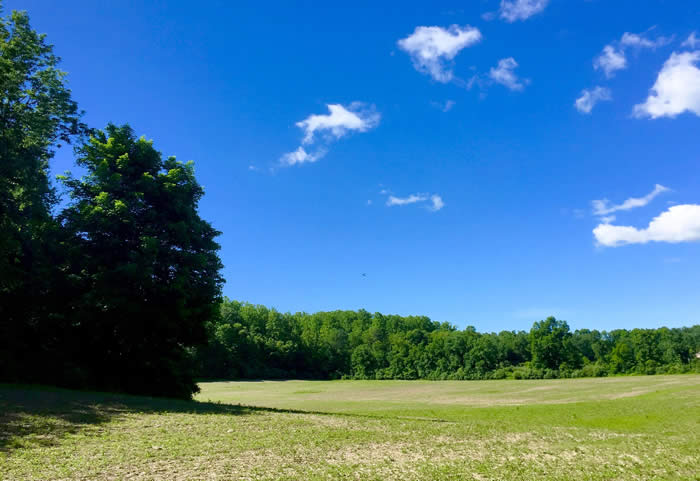
A rare chance to tour Cherry Valley field that protects turtles
By Carol Hillestad
On a drizzly, grey morning in late spring, I cross a narrow bridge over Cherry Creek and pull into an open field ringed by trees. I am meeting Colin Osborn, Cherry Valley National Wildlife Refuge’s first (and only) dedicated employee, for an introduction to this new addition to the refuge. A groundhog scampers off as I open the car door. Mourning doves take flight.
At first, it doesn’t look like much — 20 acres of open field, formerly in soybeans, now mostly bare ground.
Colin says that this is the “before” picture.
“We recently planted native warm-season grasses like big bluestem, Indiangrass and switchgrass,” he says. “The plan is to stabilize the soil, prevent further erosion, and let nature take over.” This will keep silt out of Cherry Creek, protect downstream drinking water, and provide habitat and protection for birds, mammals, reptiles and amphibians.
In a few years, he says, this will be a meadow of native plants, attracting bobolinks, Savannah sparrows and other ground-nesting birds. As if on cue, a few turkeys make an appearance up the hill.
 We head down across the field toward what seems to be an impenetrable wall of trees and vines. A V-shaped gully about 8 inches deep extends uphill as far as I can see to the very top of this steeply sloping land. With all the rain this wet spring, it’s easy to imagine the gully churning with brown mud and rocks, carrying a load of silt and residual chemicals into the creek.
We head down across the field toward what seems to be an impenetrable wall of trees and vines. A V-shaped gully about 8 inches deep extends uphill as far as I can see to the very top of this steeply sloping land. With all the rain this wet spring, it’s easy to imagine the gully churning with brown mud and rocks, carrying a load of silt and residual chemicals into the creek.
A narrow opening in the wall of trees takes us right to the edge of Cherry Creek. The effects of erosion are crystal clear: Where the gully empties over the edge toward the creek, a gaping ravine cuts the bank.
But the creek is beautiful. It’s fast-moving here, and on the far side, the flood plain hosts a rich native growth of skunk cabbage, water-loving trees, spruces, sensitive fern, and cattails. The water flowing here meanders for miles along the valley, then under Route 80 and into the Delaware River on its way to the Atlantic.
Colin’s title is wildlife refuge specialist. He’s a graduate of Penn State’s environmental resource management program, and his specialty is reptiles and amphibians. Standing in the green shade of an enormous ash at the creek’s edge, he talks about the refuge.
“It’s a pretty rare thing we’ve got here,” he says, referring to colonies of bog turtles that have been documented in the 3,000 acres under protection in the refuge. The tiny, 3- to 4-inch turtles are listed as “threatened” under the Endangered Species Act — one small step away from endangered. They’re found only in the eastern U.S. and have been documented to live more than 60 years. But invasive plants and loss of habitat put them at risk. People stealing them from the wild to sell on the black market is also a problem.
Because the land here is protected and patrolled, Colin says the bog turtles are doing well. “If they blinked out in the rest of the U.S., this could be the source for re-population,” he says, a thought which both horrifies and gives me hope.
Suddenly, this place that I thought didn’t look like much looks very special indeed.
Carol Hillestad is a hike leader and writer for Get Outdoors Poconos, a grant-funded series administered by Brodhead Watershed Association.
Photos by Carol Hillestad
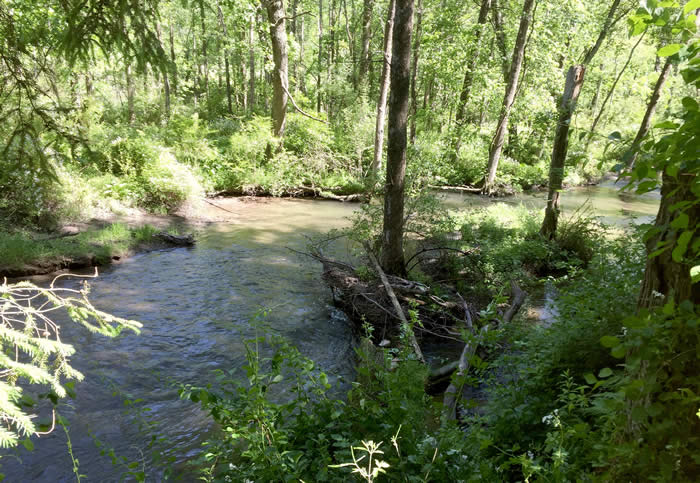 |
|
| Cherry Creek |
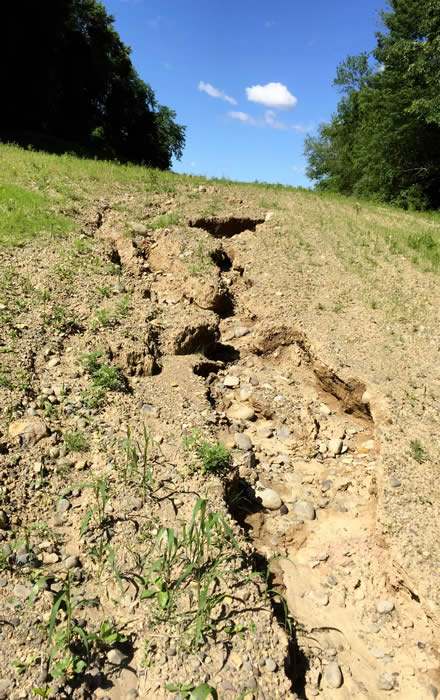 |
| This gully starts as a small crack in the earth and gets wider and deeper the closer it approaches Cherry Creek. |
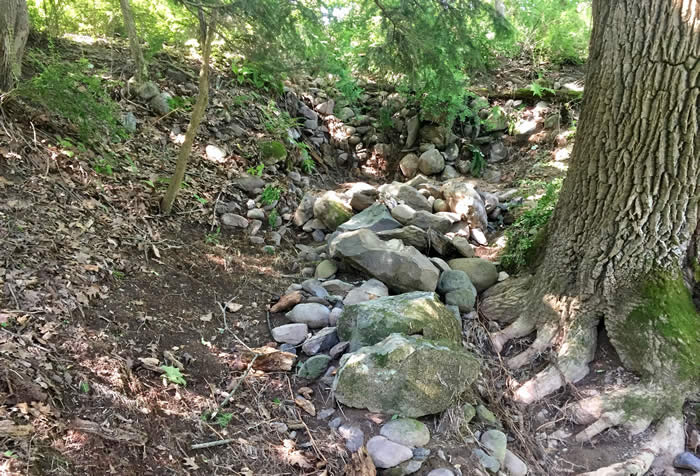 |
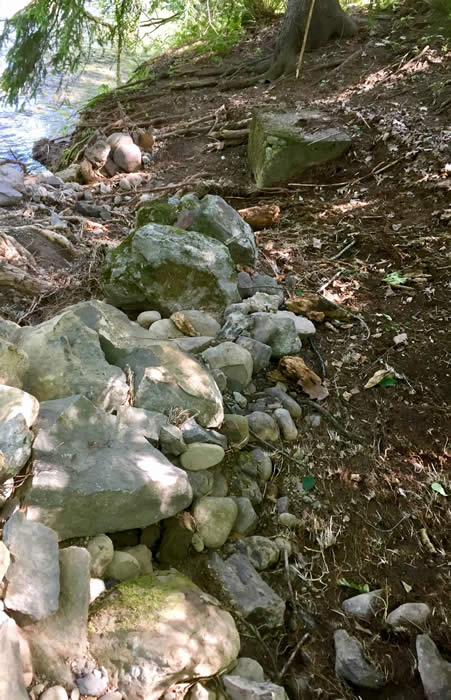 |
|
The long gully that crosses the field seriously erodes the creek bank and can cause trees to uproot. A “little erosion” causes big problems. |
 |
||
Thistle grows wild at the edge of the field. |
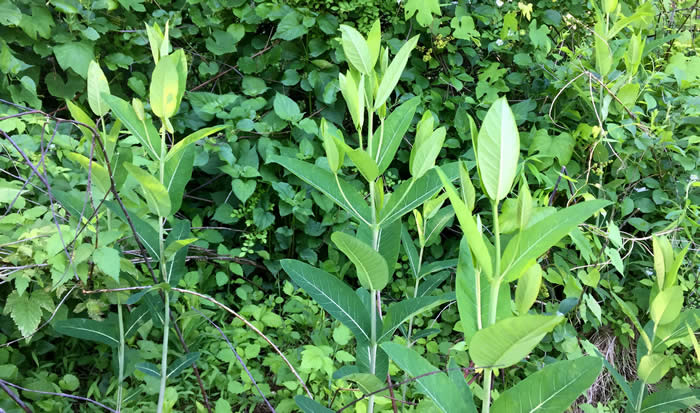 |
|
Dogbane looks a lot like milkweed, and both are poisonous, but dogbane doesn’t attract monarch butterflies. The invasive bramble May Rose is in the background. |
 |
|
The elderberry shrub is native to our area. Only its ripe berries are edible; all other parts of the plant are toxic. |
Comments from other hikers:
Be the first to comment!
Share your experiences of this trail -- what you saw, how you liked it:
